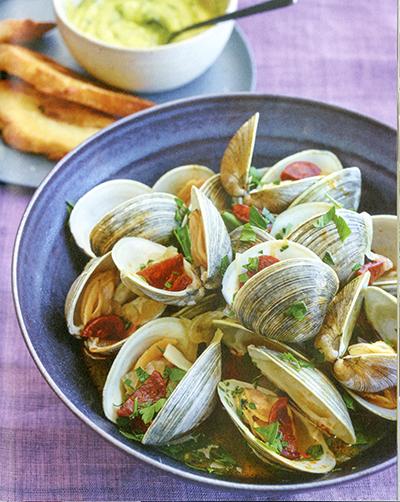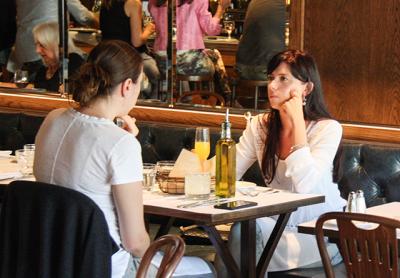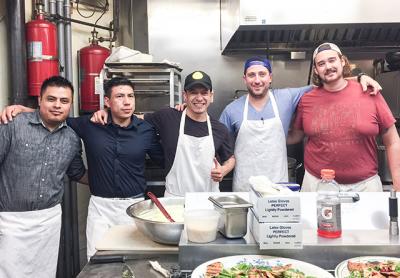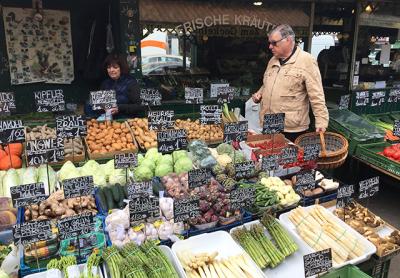East End Eats: Cove Hollow Tavern Charms
East End Eats: Cove Hollow Tavern Charms
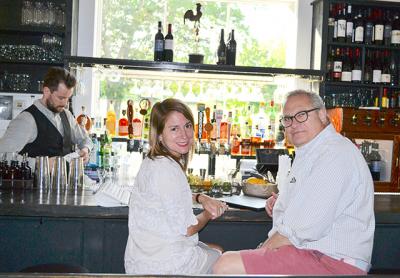
Cove Hollow Tavern
85 Montauk Highway
East Hampton
631-527-7131
Dinner Thursday through Monday
It shouldn’t have come as a surprise that dining at the new Cove Hollow Tavern, in its infancy at the time of our visit, was a seamless, professional, and delicious experience. The reason it shouldn’t have been a surprise is that this new restaurant in East Hampton is brought to you by the fine folks of Vine Street Cafe on Shelter Island.
Cove Hollow Tavern is in the old Cafe Max space, or for the more nostalgic among us, Hobson’s Choice, on the corner of Montauk Highway and Cove Hollow Road. This has always been a tiny, cozy spot and it still is. If you are familiar with Vine Street Cafe, you will see some similar simple but sophisticated design elements: white walls with exposed beams, wooden chairs and tables, dark wood floors, and a few mirrors. A rowboat hangs from a back wall, railroad spikes are bent and hammered to become coat hooks, there’s a propellor ceiling fan, and what looks like an old torpedo on another wall. The menu also has some familiar items, such as Vine Street’s stupendous mushroom Bolognese, crinkle-cut fries with aioli, weekly specials, and some serious steak offerings.
We began our meal with flash-grilled yellowfin tuna, squid ink pasta, and haricot vert with soba noodles.
The flash-grilled tuna was a neat row of six rectangular pieces of tuna divided by pickled shiitake mushrooms. It had a mild soy ginger sauce underneath, was garnished with cilantro micro greens, and was delicious and tender. The squid ink pasta (made with tonnarelli, a square rather than round-edged pasta) was garlicky and had shreds of pea tendrils and toasted bread crumbs. It was a perfectly sized portion to be an appetizer. The haricot vert and soba noodle salad was another delicious winner. The haricot vert were finely sliced and mixed with frisée, shredded carrots, and slivers of red onion, and topped with peanuts.
For entrees we ordered the mushroom Bolognese, roasted chicken, Atlantic snapper, and a side order of the crinkle-cut fries with aioli. The mushroom Bolognese is a signature dish of Vine Street Cafe (and now Cove Hollow, I presume), and it is superb. This version was made with mafaldine pasta, a.k.a. “little queens,” a flat ribbon-shaped pasta with wavy edges on both sides. The sauce is not too rich but full of flavor. I’m thinking there is some serious porcini action going on there. The roasted chicken was also excellent, but was not crisp-skinned as my guest had requested and had been assured that it was. Oh, well. It was served on top of braised kale, which had a nice peppery bite. The mashed root vegetables alongside seemed to be primarily potatoes with some carrots for color and sweetness.
The Atlantic snapper was a very generous portion of fish that had a superb grilled flavor (I’m not sure what Atlantic snapper is, perhaps Northern red snapper?). It was served with “energy greens,” which seemed similar to the kale served with the chicken, cooked al dente with a hint of red pepper, along with some roasted sweet red pepper strips. As much as I appreciate a light fish on top of greens, I was ever so grateful for the rich, buttery sauce adorning it. The crinkle-cut fries with aioli were outstanding, but I couldn’t tell if they were commercially made or house-made. No matter, my only complaint is that there weren’t enough for us little piglets. The aioli was perfectly balanced, just a bit tart and garlicky.
The service on the night of our visit was excellent, which is once again surprising, considering how young this place is. Our waiter, Mikel, knew his stuff, went with the flow (as in our flow), and was charming. Prices at Cove Hollow Tavern are moderate to expensive. Starters are $13 to $21, mains are $28 to $54, weekly specials $28 to $135 (that’s for a Flintstones-sized porterhouse steak for two), sides are $11, and desserts are $12.
There were three desserts that night. We tried all three, and each and every one was a winner. They were orange creme brulée, profiterole, and a berry grunt. When’s the last time you heard that old fashioned Maritime dessert name?
Creme brulée is a great, classic dessert, seldom served in restaurants anymore. This version was a perfectly set rich custard with just the right glass-crackly bruléed sugar topping. The profiterole was one big pate a choux puff filled with vanilla ice cream and topped with an excellent fudge sauce that got slightly hardened on contact. As if that wasn’t enough, the profiterole was sprinkled with a toasted almond brittle, giving the whole thing a warm, cold, creamy, crunchy texture.
Grunts are old-fashioned desserts similar to cobblers and pandowdies, usually made with seasonal berries or apples. with a biscuit/cobbler-type topping. They are rustic and homey. This one was made with blueberries, blackberries, and raspberries and topped with a dollop of house-made mascarpone cheese. What was particularly nice about it was the fact that neither the fruit nor the topping was overly sweet. It was a subtle dessert, letting the fresh ingredients shine through.
I have always been charmed and impressed by Vine Street Cafe and the owners/chefs, Lisa and Terry Harwood. Now they have brought that charm, simplicity, and elegance to East Hampton. Let us rejoice and pass the Bolognese!



